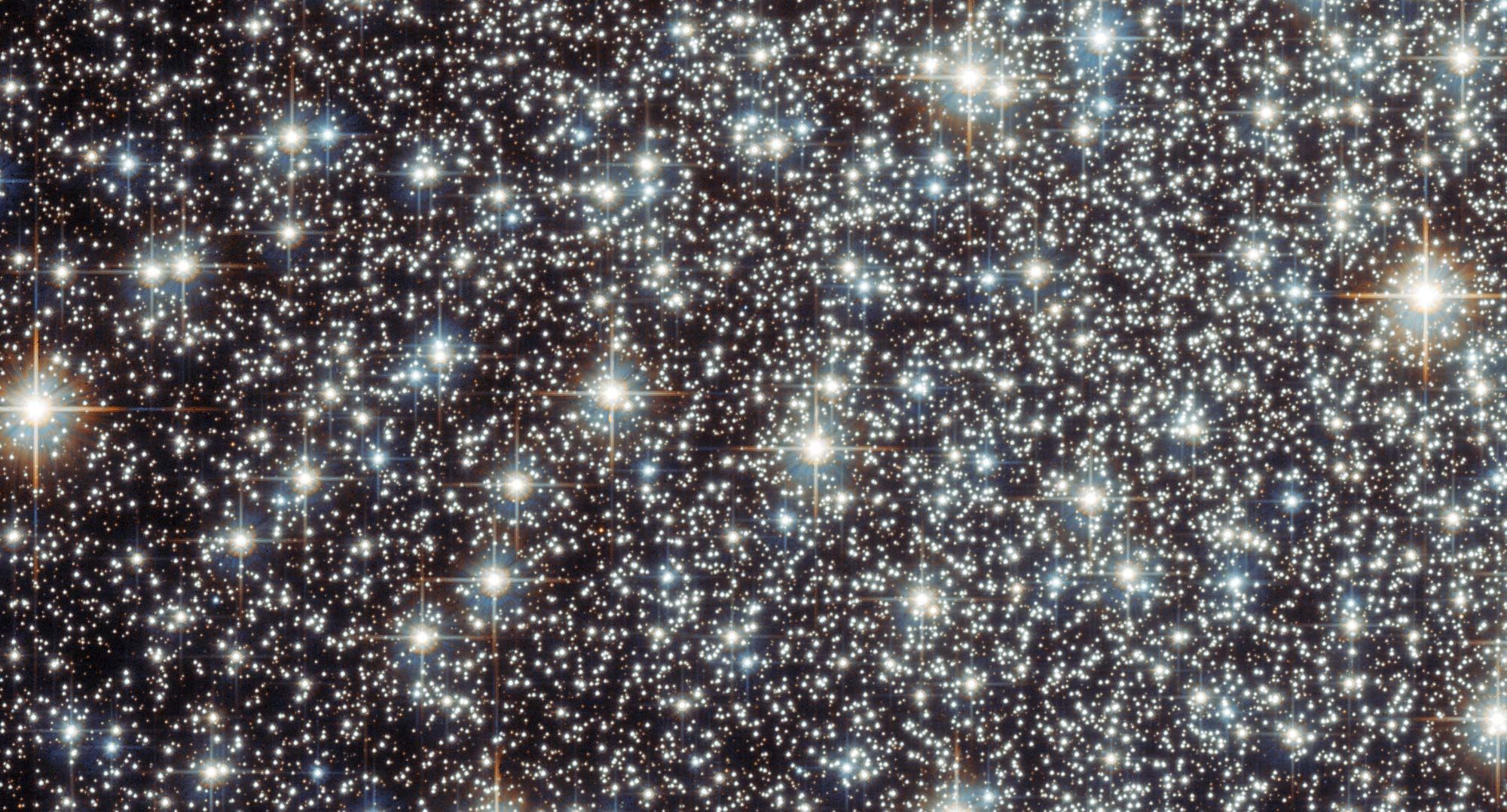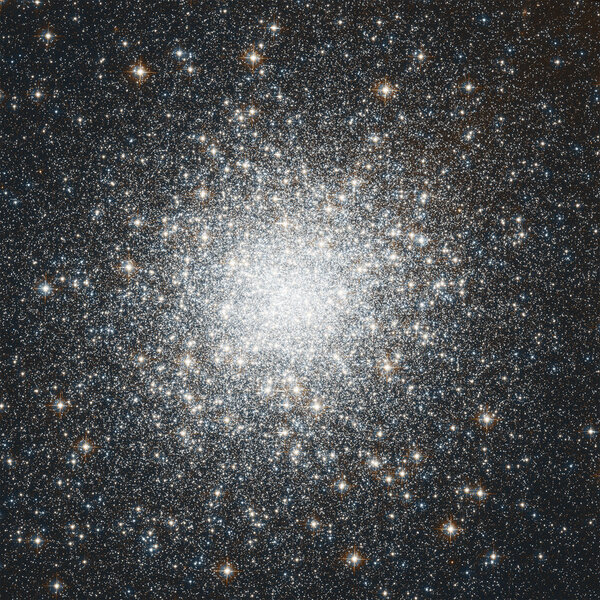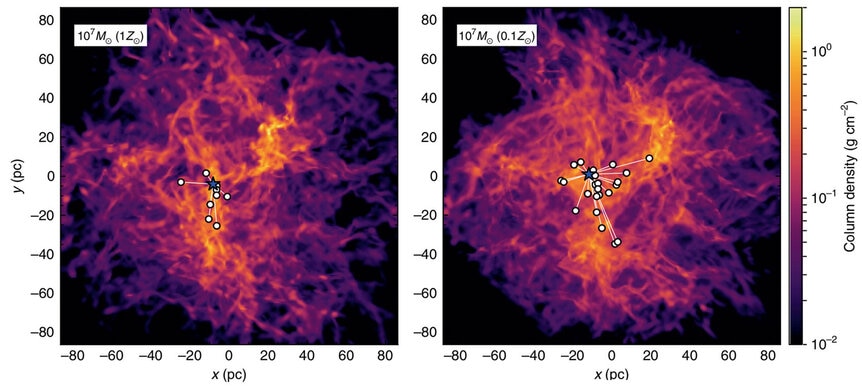Create a free profile to get unlimited access to exclusive videos, sweepstakes, and more!
How to make a massive star cluster: Start with a lot of gas. A *lot*.

Globular clusters are one of my favorite kind celestial objects. These are roughly spherical stellar cities, some with hundreds of thousands of stars in them (and a few topping a million). About 160 of them are known to orbit the Milky Way galaxy, and through an eyepiece the nearer ones are staggeringly beautiful, like a buzzing beehive of jewel-like stars.
It used to be thought that they were very old, forming all at once around the same time galaxies did, but more recent work shows that to be too simplistic; many have younger stars in them, and some objects we thought were globulars are actually the cores of dwarf galaxies that had their outer stars ripped from them by galactic collisions!
And the enduring mystery remains: How did these enormous balls of stars come to be? They're so much larger than "normal" clusters (usually called "open clusters," such as the iconic Pleiades) that some astronomers think they need special circumstances to form. That's always seemed unlikely to me since big galaxies tend to have lots of globulars orbiting them, so they can't be all that hard to get started.
Some recent work modeling star formation confirms my intuition. A team of scientists used computer models to investigate how globulars form, and found that they occur naturally if you start with enough raw materials. In this case, that means gas.
Gas clouds, called nebulae, come in all kinds of shapes and, more importantly in this case, sizes. The researchers looked at the most massive of these nebulae, called giant molecular clouds. Using the physics of how gas will behave as it collapses under gravity, they used clouds with ten million times the mass of the Sun — which are huge, but do exist in galaxies today — to see what happens.
What they found is that the gas fragments into filaments as it collapses, and these filaments of gas act as conduits, feeding material down into the denser regions near the center. The densest region forms the most stars, and that’s where the massive cluster forms. Smaller clusters form around it, and over time these merge with the bigger one, causing it to grow. The models show that the cluster growth is about half from gas falling in and half from mergers. After about five million years of this, the cluster takes shape.
A big question in cluster formation is what role massive stars play. These blast out huge amounts of light, light that gets absorbed by the gas around them, which warms the gas. Warmer gas wants to expand, not contract, so this "radiative feedback" tends to slow star formation. But by how much?
Here they did something clever. Gas clouds are mostly hydrogen and helium, but they have small amounts of heavier elements in them. These heavier elements are better at absorbing the light from those massive stars, which more efficiently heats the gas, which in turn makes it harder to form stars.
So the scientists ran the models in two different ways; one with the presence of heavy elements matching what we see in the Universe today, and one with one-tenth that amount. What they found is that the heavy-elements models produced smaller clusters than the ones without these elements. As expected, that’s because stars are harder to form in the heavy elements models. What surprised me is that it didn't have nearly as big an effect as I'd expect. The clusters formed using modern day element abundances had a mass of about 200,000 times the Sun, while the ones formed without those elements had about 800,000 solar masses. A lot bigger, but not vastly so.
The importance of this is that these elements are created when massive stars explode, and when the first globular clusters formed in the Universe that hadn't happened much, so they formed from gas that was low in heavy elements. Today, billions of years later, those elements are much more common. That means you'd expect globulars that are very far away (so we see them when the Universe was younger) should be on average more massive than local ones.
Another aspect of this is even better. They ran simulations using smaller clouds, and (unsurprisingly) found the clusters that formed in them were less massive, too. But comparing the cloud mass size to cluster mass, they found a simple mathematical relationship between them across all gas cloud masses. That means really big clusters form naturally from really big clouds, and you don't need any special circumstances for it. If you have a big cloud, you get a big cluster. Easy peasy.
Initially, globular clusters formed at the same time as galaxies did, when the Universe was only a billion years old (give or take a few million). But they're not monolithic; they come in different sizes and masses, different elemental abundances and different structures, and the stars in them have different ages. They may be homes to elusive intermediate mass black holes, and some may even be forming today! This work is a big step forward in understanding how they formed, and why they are as we see them today.
The next time I take a look at M2 or M22 through the eyepiece of my telescope, I'll be thinking about that. Nothing stirs the soul of an astronomer like understanding the beauty you're taking in, and knowing why it's there.




























